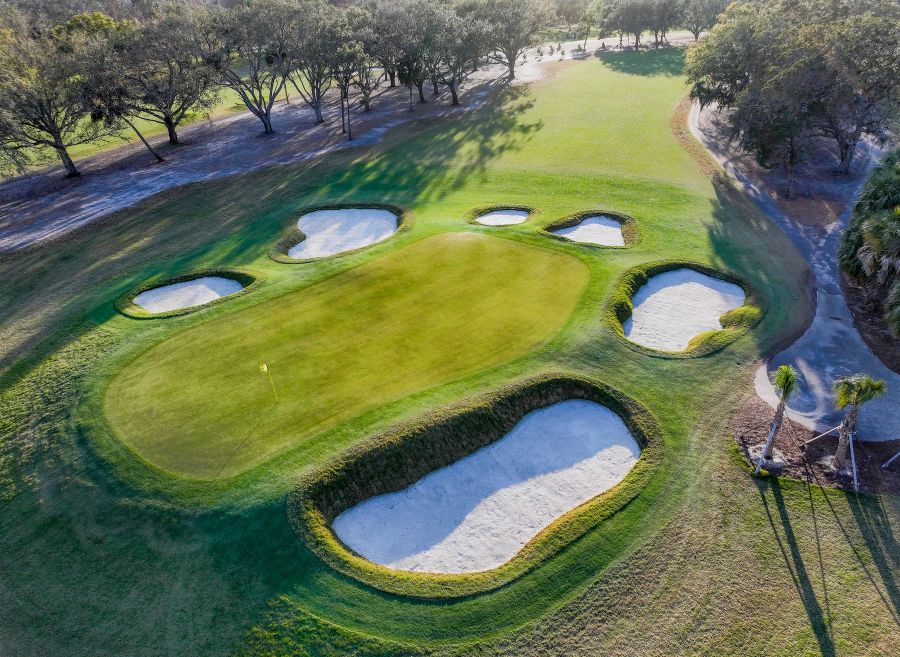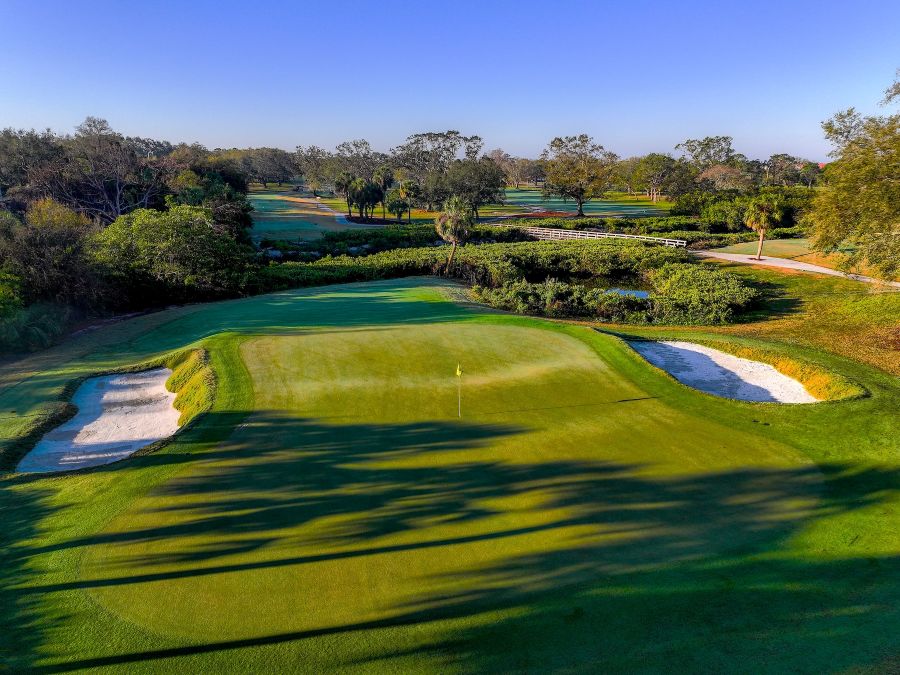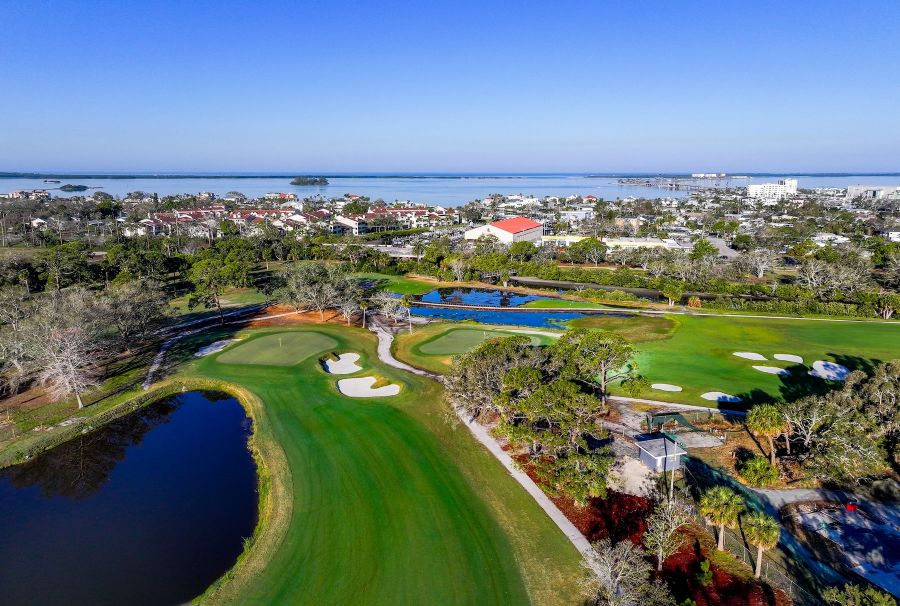Iconic Central Florida Muni design gets a complete makeover by Ross expert Kris Spence
Dunedin, FL – Dunedin Golf Club, the historic Donald Ross-designed course owned by the city of Dunedin (just north of Tampa), has completed a $6 million course restoration. The course has been brought back to its Golden Age of Architecture roots through the guidance of Kris Spence, a leading Donald Ross expert.
The course was built in 1926 and opened for play on January 1, 1927, under Dunedin Isles Golf Club. At the time, Ross referred to it as “his masterpiece” and attributed it to its ideal combination of rolling hills, waterways, and other natural hazards that made it possible to achieve his idea of course perfection. In 1939, the city of Dunedin took ownership of the course, and in 2024, it took over the management operations.
In 1944, the PGA of America moved its headquarters here from Chicago and renamed the course PGA National Golf Club – leasing it from the city. Eventually, the PGA moved out, but the site hosted 18 consecutive Senior PGA Championships – as well as the original PGA Merchandise Show in 1954.
Over the years, several renovations took the course further away from what Ross had created. This included the green complexes shrinking 35-to-50 percent, taking away from the strategy Ross intended. In 2014, it was listed on the National Register of Historic Places. Now, thanks to this latest and meticulous restoration of the green complexes, bunkers, fairways, and tees, every golfer can experience the course as Ross intended – right down to the actual greens Ross originally created.
“At Dunedin, the most pleasant surprise was that I could see the old green extending out beneath those renovations and was able to measure them and compare them to his original plans and notes, and I quickly realized that the original greens had never been destroyed,” says Spence. “They were just buried under this material, so the opportunity to remove the material, excavate and expose the original greens, and restore them was possible. It’s fairly rare that they hadn’t bulldozed them away. There’s no question that by the number of bunkers and the contouring we found in the greens, Ross was clearly given a mandate or a directive to build a top shelf championship layout on that property.”
Spence says the greens’ original contours and elevation changes are back for today’s golfers to experience firsthand. “They’re as good as any out there with great variety,” he says. “There are some subtle greens on some of the longer holes, and some with a lot more movement, tilt, and complexity to them on some of the shorter holes. It’s what we’re used to seeing out of Ross when he was really on point. In hindsight, it was a blessing that they just buried the greens. It was sort of an archeological dig to go down and find the surface of the old greens and peel off the newer material like we’re peeling the rind off an orange – to reveal that original green. Once we did, we could see the original greens that had been buried for 75 years.”
“Players are going to experience the greens and bunkers how he envisioned it,” continued Spence. “There’s some difficulty and depth to it all, and the bunkers are very challenging. That’s the unique thing about Ross: He brought the style of golf to this country, which he grew up experiencing in Scotland. There are a lot of different shots golfers won’t experience on other courses. The little bump and runs on the ground and the low approaches into the greens you experience in Scotland, you can now experience at Dunedin.”
The response from golfers has been nothing short of spectacular. According to Blair Kline, the course’s General Manager of Golf Operations, a lot of that is because of authenticity. “If Ross crawled out of his grave today and saw how far the ball goes and how fast the greens are compared to his era, I do not believe he would design the same course today that he designed in 1926,” says Kline. “Now we have the course that we believe he would design. The routing is still the same; some bunkers changed locations to account for driving distance, and the greens are incredible. We recaptured all the pin placements, too.”
Dunedin Golf Club is now widely considered one of Florida’s top municipal courses, along with the Winter Park Golf Course in Orlando and The Park at West Palm Beach. Rates for 18 holes range from $85 to $130, depending on the season, and there are discounted green fees for local residents.
“It’s been an overwhelming success, said Kline. “People are going out of their way to come here and play it. From that respect, it is helping to put Dunedin in front of some people who may not be aware of this community and how great it is. Our rates are very competitive compared to many of the top courses and destination golf resorts in the region, and some of them have already started sending us golfers.”
For more information, visit https://dunedingolfclub.com.
About Dunedin Golf Club
Designed by world-renowned golf course architect Donald Ross, and owned by the city of Dunedin, located just north of Tampa, Florida, the Dunedin Golf Club opened on January 1, 1927.
In 1939, the city of Dunedin first took ownership of the golf course. From 1945 through 1962, it was the home to the PGA of America. During that time, the club hosted 18 Senior Tour Championships, marking the beginning of the Senior PGA Tour. Back then, the PGA and PGA Tour of today were the same corporation. It was also where the PGA Merchandise Show started in 1954. Many golf legends have visited Dunedin Golf Club, including Bobby Jones, Gene Sarazan, Ben Hogan, Sam Snead, Louise Suggs, Babe Didrikson, and Byron Nelson. In 2024, the facility underwent a complete restoration by architect Kris Spence to return the course to its original Donald Ross design. It has been restored to nearly the same as when Ross first drew it up. Today, Dunedin Golf Club is one of the top clubs in the Tampa area.
Media Contacts:
Kevin Frisch PR
Kevin Frisch
(989) 614-0241
Carl Mickelson
(512) 797-2673






